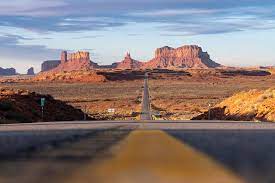Published on : Wednesday, June 15, 2022
Not like the onesworking in retail or restaurants, tourism authorities not only require captivatingpeople in their product, they also have to persuade them to travel a long distance for that purpose.
If they happen to be local peopleenthusiastic to welcome tourists to tribal lands, they might be further dare to effectively attract audiences to places that are lesser known or problematic to reachcompared to those adjoiningimportant infrastructure and transportpassages.
Even travelers to fairlydistant, yet well-attended places like the Grand Canyon and Monument Valley, may not acquireinformation regarding how native values and custom are instilled in stories and told for centuries among the primeval rock foundations.
For assisting promoters on tribal lands for getting greater understandingsregarding sustainable tourism possibilities, the American Indian Alaska Native Tourism Association (AIANTA) requested faculty from the School of Community Resources and Development of Arizona State University for coming up with a program in ecological tourism,especially for those working for boosting visits to tribal lands.
The CEOof AIANTA, Sherry Rupert, said that visitors inseveral major attractions often fail to decipher the abundance of native culture.
Rupert said that although one visitswell-known places like Grand Canyon, they wouldn’t know it fully until they have spoken with native people from the 11 clans of the Grand Canyon who can tell them about their associationwith that place and how they lived there. Such stories are passed down through generations.
Related Posts
Tags: arizona state university, sustainable tourism, Tourism news













